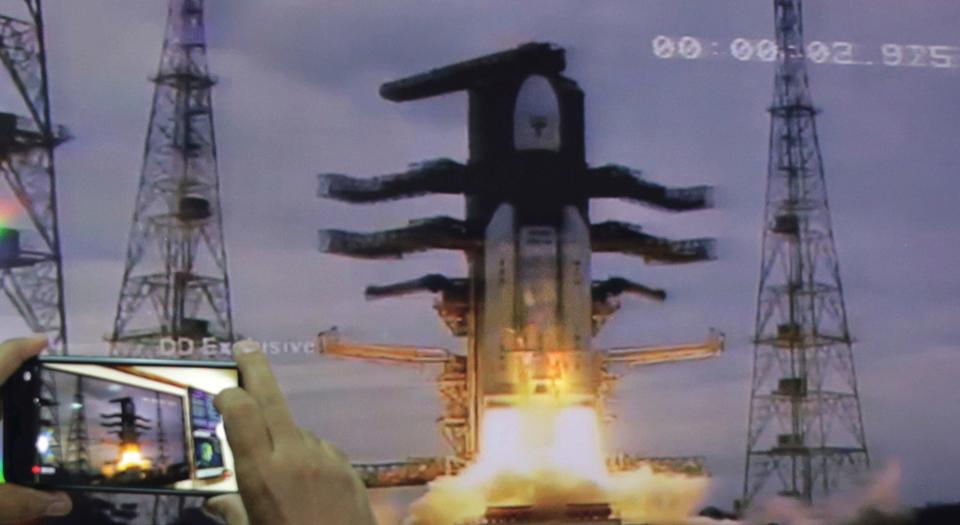India launches 'historic' flight bound for the moon
Days after the United States celebrated the 50th anniversary of the first human steps on the moon, India on Monday launched an unmanned flight bound for the far side of the moon.
If Chandrayaan2's lander Vikram touches down as scheduled on Sept. 7, India will join the U.S., Russia and China as nations to land on the moon. India hopes to complete a manned mission to the moon within three years.
Indian Space Research Organization's mission control center in the southern city of Sriharikota burst into applause after the launch.
"It is the beginning of a historical journey of India toward the moon," said K Sivan, head of the agency. "It is my duty to salute all the people who have done the work."
The launch helped wash away the disappointment felt across the nation just one week ago, when the launch was scrubbed less than an hour before ignition because of a "technical snag," according to the space agency.
Indian media later reported that a helium leak was to blame.
On Monday, Indian Prime Minister Narendra Modi reflected the nation's pride on Twitter in a series of tweets.
"Indian at heart, Indian in spirit!" he tweeted. "Efforts such as #Chandrayaan2 will further encourage our bright youngsters towards science, top quality research and innovation."

U.S. flights took just a few days to arrive at the moon. To save fuel, India is using a circuitous route relying on the slingshot effect of the Earth's gravity. For more than three weeks, Chandrayaan – which translates to "mooncraft" in Sanskrit, an ancient Indian language – will first orbit the Earth before making its way to a lunar orbit.
The lander Vikram will separate from the orbiter and perform a series of complex maneuvers aimed at slowing its approach. Imaging of the landing area will be used to find a "hazard-free zone" for a soft landing in a high plain between two craters, the space agency said.
The lander's 14-day mission focus on the search for water and minerals and will attempt to measure moonquakes.
India's first lunar mission, more than a decade ago with Chandrayaan1, did not land on the moon but conducted a search for water using radar.
Contributing: The Associated Press
This article originally appeared on USA TODAY: Moon landing: India launches 'historic' flight bound for the moon

